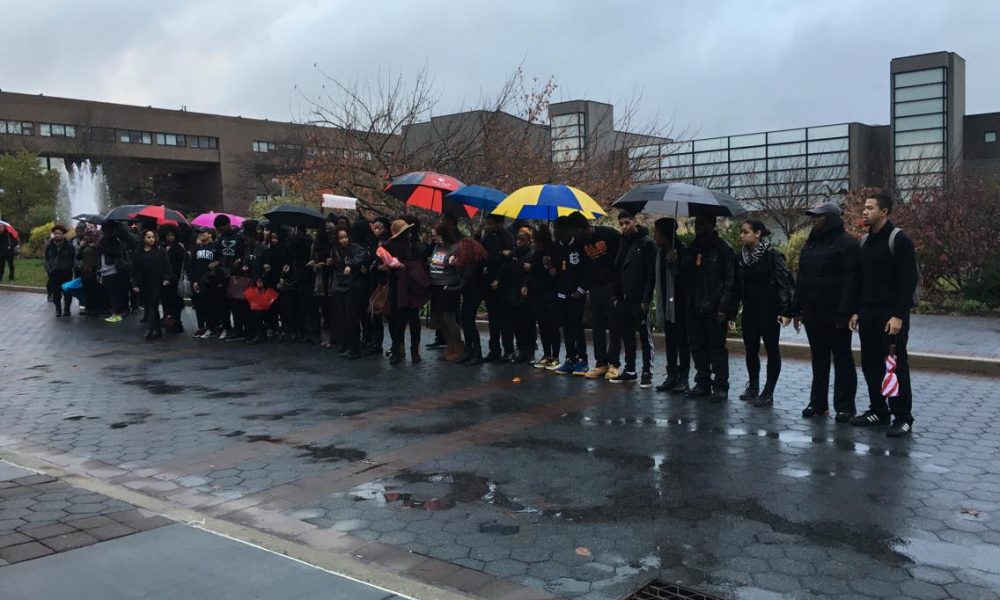To be perfectly honest, I’ve lost quite some faith in recent live-action entertainment. Don’t get me wrong, there are plenty of TV shows and movies that I like watching, but very few of them have struck the chord of diversity and equal representation that us millennials have been looking for. In 2015, we’ve had instances of whitewashing in films like Pan, with Rooney Mara cast as Native American character Tiger Lily, and Stonewall, which depicts the revolutionary Stonewall LGBT riots having been sparked by a generic white boy throwing the first brick despite reports that a black transgender woman, Marsha P. Johnson, did so.
Television shows don’t fare much better. Shows like Supergirl pander to an incredibly superficial form of feminism, and Sense8—in half-assed attempts at diversity—regurgitates tired plot-points like an Indian woman unhappy with her arranged marriage and a gay man portraying the tragedy that always comes with his sexual orientation. There’s little that makes me optimistic of live-action entertainment breaking away from stereotypes of certain demographics and presenting them meaningfully.
On the other hand, I’ve seen a remarkable amount of progression in a medium that not many would expect to see it in, today’s animated programs.
For a while, I hadn’t exactly kept up with American cartoons; I was often disillusioned by what I thought to be an era of TV cartoons that catered exclusively to the “weird-is-chic” audience that frequented their local Hot Topic. In terms of animation, I mostly watched anime (often rife with problematic representation of women) and the occasional Oscar bait animated feature. It was only through my ventures on the internet that I would see various cartoons become highly recommended. Eventually, I caved on a few of them, and while I’ve been enjoying the crap out of them and delving deeper into each show, I’ve learned how much they’ve worked towards representing a world as diverse as our own.
Steven Universe—the story of a boy named Steven learning about his magical powers under the tutelage of three female-identifying magical beings—has made excellent strides in diversity since its airing in 2013. Not only does it show a complex yet positive relationship between a gender role-defying boy being raised by three women, but said women have each been presented with their own multifaceted backstories. One is brokenhearted over the unrequited love and subsequent passing of Steven’s mother and is learning how to rely on her own strength, another tries to rise above the circumstances of her defective birth and the other is literally made of the unparalleled love between two girls. Aside from them, it shows off plenty of side characters of varying ethnicities, a voice cast of matching variety and even subtle background elements like a lesbian couple with a son that didn’t have to be there to normalize these important progressive societal aspects. For a generation demanding more minority representation in complex stories, Steven Universe has all of that and more.
Among a plethora of animated shows that portray an all-American nuclear family, 2011’s Bob’s Burgers is perhaps the most relatable among them. The Belcher family, who run a burger joint, consists of a wife that’s loud, obnoxious and never afraid to speak her mind, a youngest daughter that loves pranks and mischief as much as any child, a crude and free-spirited son with surprisingly prevalent feminist values and an eldest daughter whose raging hormones and awkward relationships tickles the fancy of any viewer that has delved into their own strange fantasies. All of these interesting and relatable characters are tied together by the straight-faced husband/father who, while frustrated by his family’s quirks, never demonizes any of his family for being who they are.
Even Rick and Morty, the popular sci-fi adult-rated cartoon, has its share of diverse representation. The main protagonist and mad scientist, Rick, offers up an incredibly progressive yet necessarily passive character trait: Rick has been confirmed by co-creator Justin Roiland as being openly pansexual (sexually attracted to all genders and gender identities). The best part is that his preference is never hinted at, teased or made apparent until episode 14 of the series, in which Rick rekindles a relationship with a hive-mind entity that communicates with and even sexually stimulates Rick through the bodies of an entire planet’s population (meaning men, women and everything in between). There’s incredible impact behind a popular character like Rick whose non-traditional sexual orientation is treated simply as another aspect of his overall characterization. It’s important, but otherwise rightfully inconsequential in terms of who he is as a person.
There are plenty of other cartoons that I haven’t (yet) followed that have displayed progression. The recent We Bare Bears depicts different cultures as a normal part of society such as a relatable Korean-American girl character and her family as well as women with hijabs plugged into the background. 2012’s Legend of Korra, the sequel to the acclaimed Avatar: The Last Airbender, continued its predecessor’s efforts of adapting Asian culture in an accurate and original way. The ending of the show also gifted us with a strong and complex female protagonist involved in a lesbian love interest. Disney and Pixar have even made their own efforts towards diverse representation what with the upcoming wide release of animated short film Sanjay’s Super Team,the story of a young Indian boy daydreaming about Hindu gods as superheroes. The upcoming 2016 film, Moana, will feature the very first Disney princess of South Pacific descent.
The care and subtlety taken with these cartoons is accurately depicting worlds with multitudes of cultures and ideals. This makes me wonder why live-action can’t seem to pin it down. In cartoons, no unique character trait is taken too seriously, yet these characters provide enough levels of depth and relatability to match up to real life. My one hope for live-action entertainment is that it’ll eventually catch up to the multitude of representation cartoons have been doling out.




Comments are closed.